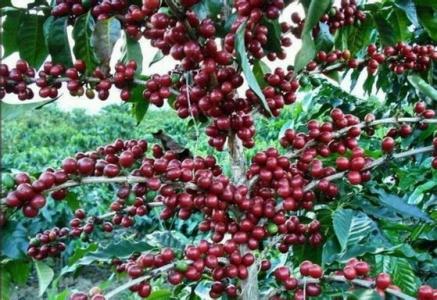Description of Flavor in Coffee Bean producing areas in Latin America introduction to Variety treatment of planting Environment
Description of Flavor in Coffee Bean producing areas in Latin America introduction to Variety treatment of planting Environment
Brazil's output of coffee, bananas and cassava ranks first in the world and second in the world, while cocoa production ranks third in the world. A large number of high-quality beef and mutton produced in Argentina are famous in the world. The inland rivers of Latin America are rich in freshwater fish, with more than 2500 and 3000 species. The coasts of Peru and Chile, the Gulf of Mexico and the Caribbean, the coasts of Brazil and the South Atlantic are all important fishing grounds in the world, rich in sardines, tuna, bass, mackerel, cod and a variety of shrimp. The catch is among the highest in the world. The variety of animals and plants in the Amazon rainforest is unique in the world, with as many as 86000 to 90, 000 plant species alone. There are many edible, medicinal and economically valuable resources, such as mahogany, sandalwood, mahogany, ointment, snake mulberry, cinnamon, cinchona and various coconut and palm trees; some valuable economic forests such as spruce and cedar are growing in the Andes and Central America; salt-tolerant mangroves and tannin extract trees are also growing in the coastal areas; flood-resistant tree species and other plants are growing in the floodplain.
Once the second largest coffee producer after Brazil, Colombia, which has been overtaken by Vietnam to become the world's largest supplier of washed beans, has become synonymous with good coffee after years of image-building. Despite the balanced flavor, thick texture, famous sour taste and aroma, most Colombian beans are mediocre and have no personality if you taste them carefully. When choosing Colombian beans, you should not only look at the grade marks, but also pay attention to the producing areas, because Colombia is currently graded according to the size of beans, so the Supremo or Excelso on the coffee bag refers to the size of beans rather than the quality, but the size of beans is not necessarily related to the flavor of the entrance, but is closely related to the altitude of the place of origin and taste, so this grading system is often criticized. In fact, most of the medium,
South American countries have switched to altitude classification, and only Colombia maintains this traditional classification system, which many Colombian coffee makers have recognized and have begun to demand a change in the classification system. Colombia's famous producing areas include Medellin, Armenia and Manisales, so the word MAM is sometimes seen on coffee bags, indicating that the coffee beans may come from any of these three producing areas. Almost all of Colombia's finest coffee beans come from traditional small farms, which grow old coffee trees from Typica, which are well planted and carefully harvested and treated, so they are of high quality but relatively low in yield.

Important Notice :
前街咖啡 FrontStreet Coffee has moved to new addredd:
FrontStreet Coffee Address: 315,Donghua East Road,GuangZhou
Tel:020 38364473
- Prev

Nicaragua coffee beans variety characteristics flavor description grinding scale introduction
Nicaragua coffee bean species characteristics Flavor Description Grinding Scale Introduction Central Colombia is divided into several valleys by three north-south vertical mountains, of which the central and eastern mountains are the main coffee producing areas. The coffee is named after the market where it is distributed. In the Central Mountains, Medellin, Armenia and Manizales are located.
- Next

How does the dry smell of Costa Rican beans come from? what kinds of manors come from?
How does the dry smell of Costa Rican beans come from? what kinds of manors come from? 1) dry fragrance: when grinding, it feels fragrant, full-bodied, with a unique vanilla fragrance. 2) Wet fragrance: light floral and very weak tea aromas, slightly sweet BlackBerry fruit and a touch of caramel, sour, weak sweetness and chocolate. After the entrance, the palate is quite balanced, pure and mellow.
Related
- Detailed explanation of Jadeite planting Land in Panamanian Jadeite Manor introduction to the grading system of Jadeite competitive bidding, Red bid, Green bid and Rose Summer
- Story of Coffee planting in Brenka region of Costa Rica Stonehenge Manor anaerobic heavy honey treatment of flavor mouth
- What's on the barrel of Blue Mountain Coffee beans?
- Can American coffee also pull flowers? How to use hot American style to pull out a good-looking pattern?
- Can you make a cold extract with coffee beans? What is the right proportion for cold-extracted coffee formula?
- Indonesian PWN Gold Mandrine Coffee Origin Features Flavor How to Chong? Mandolin coffee is American.
- A brief introduction to the flavor characteristics of Brazilian yellow bourbon coffee beans
- What is the effect of different water quality on the flavor of cold-extracted coffee? What kind of water is best for brewing coffee?
- Why do you think of Rose Summer whenever you mention Panamanian coffee?
- Introduction to the characteristics of authentic blue mountain coffee bean producing areas? What is the CIB Coffee Authority in Jamaica?

